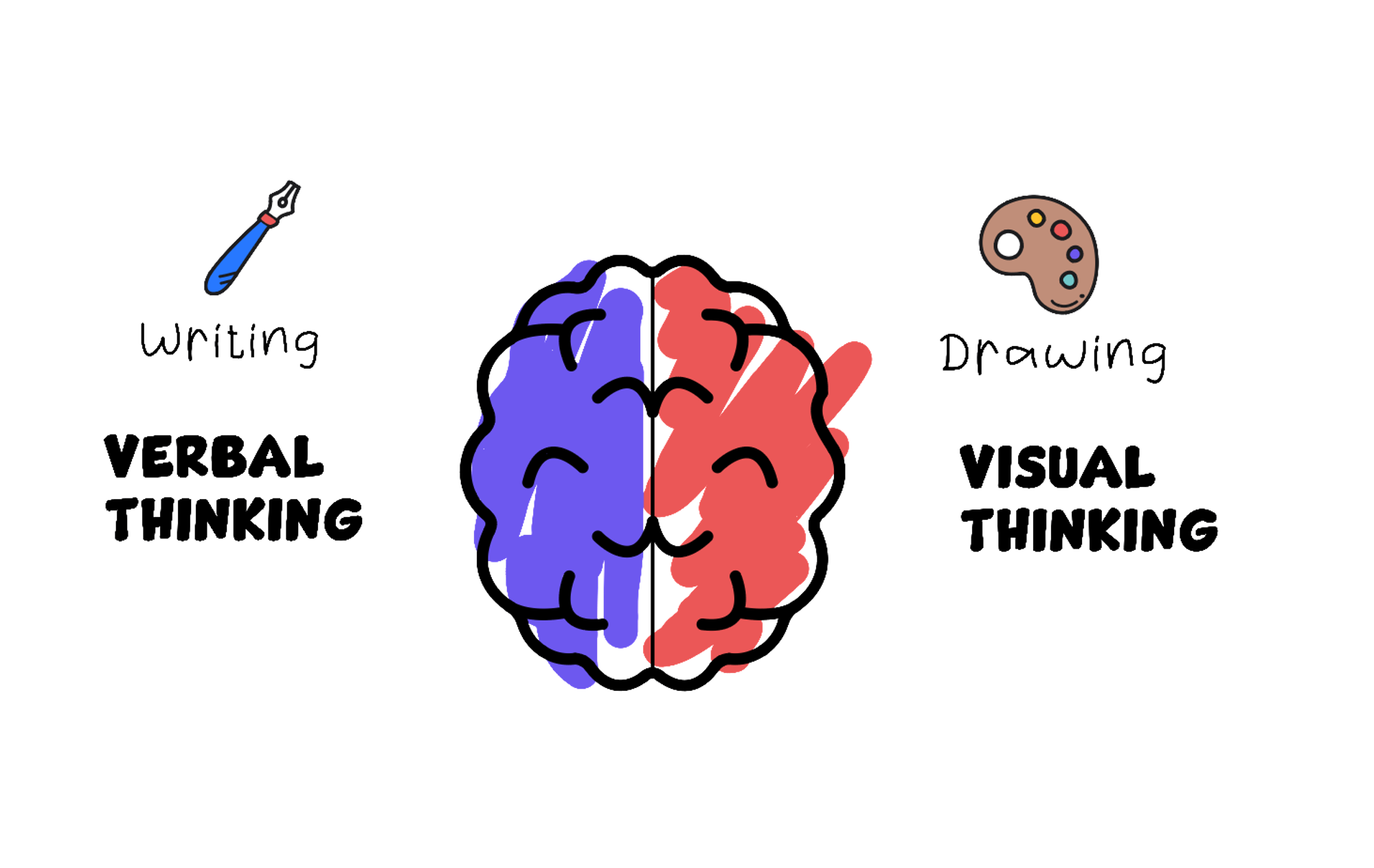The Different Forms of Thinking: Visual vs Verbal
Thinking is a complex process that can take many different forms. While some people tend to think primarily in visual images, others prefer to think in words and language. Understanding the difference between these two forms of thinking can help us to better understand our own thought processes, and to better collaborate with others.

Visual Thinkers
Visual thinkers are individuals who use mental images to process information and solve problems. They tend to think in pictures, and are able to construct a mental image of a scene or concept with great detail. This makes them well-suited to tasks that require imagination and creativity.
Visual thinkers often find it difficult to describe their thoughts and ideas in words, as they are primarily experienced through images. They may need time to articulate their thoughts and find the right words to express their ideas.
Verbal Thinkers
Verbal thinkers, on the other hand, think in words and language. They tend to think through a narrative, constructing an internal dialogue in their head. Verbal thinkers are often skilled at expressing their thoughts and ideas through language, making them well-suited to tasks that require clear communication.
While visual thinking and verbal thinking are often seen as opposing forms of thinking, the truth is that everyone engages in both to some extent. The key is to understand our own thought processes and to find ways to effectively communicate and collaborate with others, regardless of their preferred form of thinking.
In the workplace, it's important to recognize that there are different types of thinkers and to use visualization tools and techniques that will help everyone to participate and contribute. By leveraging the strengths of different forms of thinking, we can create a more diverse and productive team dynamic.
10 different behaviors between Visual Thinkers and Verbal Thinkers
- Processing Style: Visual thinkers process information primarily through images and spatial relationships, while verbal thinkers process information primarily through words and language.
- Learning Style: Visual thinkers tend to learn best through visual aids and hands-on experiences, while verbal thinkers tend to learn best through lectures, reading, and discussion.
- Memory: Visual thinkers tend to have better spatial and visual memory, while verbal thinkers tend to have better verbal and auditory memory.
- Communication Style: Visual thinkers tend to communicate using visual aids, diagrams, and metaphors, while verbal thinkers tend to communicate using precise language and logical arguments.
- Problem-Solving: Visual thinkers tend to excel at solving problems that require spatial reasoning, while verbal thinkers tend to excel at solving problems that require logical reasoning and critical thinking.
- Creativity: Visual thinkers tend to be more imaginative and creative, while verbal thinkers tend to be more analytical and logical.
- Attention to Detail: Visual thinkers tend to notice small details and patterns that others might miss, while verbal thinkers tend to focus on the bigger picture.
- Imagination: Visual thinkers tend to have a more vivid and active imagination, while verbal thinkers tend to be more grounded in reality.
- Organization: Visual thinkers tend to organize their thoughts spatially and visually, while verbal thinkers tend to organize their thoughts linearly and logically.
- Perception: Visual thinkers tend to perceive the world more through their senses, while verbal thinkers tend to perceive the world more through language and concepts.
